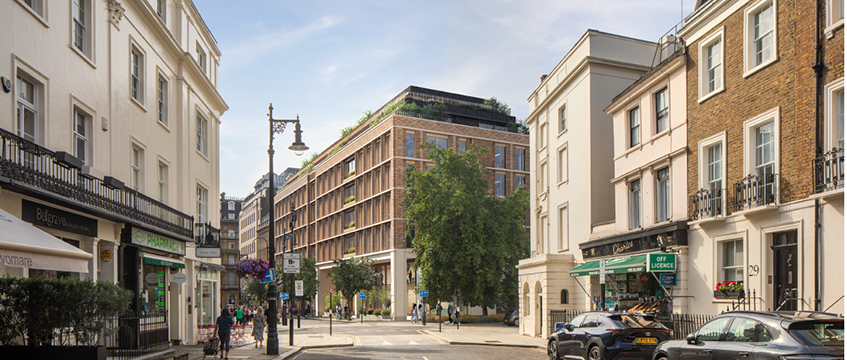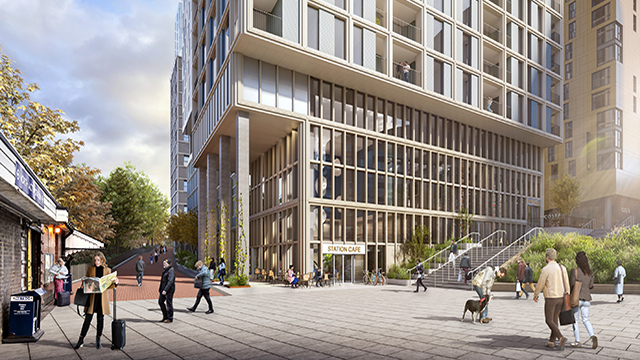Restrictive covenants – Discharge or modification – Section 84(1)(a) and (aa) of Law of Property Act 1925 – Restrictive covenant affecting houses in 1960s terrace –Covenant prohibiting erection of buildings without consent of vendor – Whether applicant entitled to discharge or modification to permit construction of new house and extension – Whether restriction obsolete – Whether securing practical benefits of substantial value or advantage – Application allowed
The applicant was the freehold owner of a 1960s end-of-terrace house in Halifax. There were six houses in the terrace and each had the benefit of a vehicular and pedestrian right of way extending to the rear of the terrace. The owner of each house was liable to pay one-sixth of the cost of maintaining the way in good repair. Each house was also affected by a restrictive covenant, imposed in a conveyance from the original vendor of the houses, prohibiting the erection of any buildings on the land without the previous written consent of the vendors and their approval of plans.
The applicant obtained planning permission to extend the terrace by building a new house adjoining the flank wall of his property; he also proposed to construct a single-storey kitchen extension to the rear under permitted development rights. He applied to discharge or modify the restrictive covenant, under section 84(1) of the law of Property Act 1925, so as to allow that development to take place. He argued that the restriction was obsolete, within ground (a) in section 84(1), either because the required permission could only be given by the two original vendors and it was not known what had become of them, with the result that the covenant was effectively spent; or because the purpose of the covenant, which was to ensure that the houses in the terrace retained a uniform appearance, could no longer be achieved because various other houses in the terrace had been extended over the years by the construction of, variously, a porch, a kitchen extension, a conservatory and certain outbuildings. He also relied on ground (aa), that the restriction impeded a reasonable user of the land and did not secure any practical benefits of substantial value or advantage to those entitled to its benefit.
The owners of three other houses in the terrace objected to the application. Their main concern was that the new development would encroach onto the right of way, restricting vehicular access, and that the construction of a new house would adversely effect on the availability of on-street parking.
Held: The application was allowed.
(1) A restriction was obsolete if its original object could no longer be achieved. If the purpose of the covenant under consideration were regarded narrowly, as being to restrict the development of each plot to one house, then it could still be achieved. Even if the purpose were construed more widely, as maintaining a uniform appearance for the terrace of houses, that purpose was also still achievable. The site still had the appearance of a short terrace of six 1960s houses. Its fundamental uniformity had not been diminished by the addition of a porch here or a conservatory there, and the construction of garages to the rear of the terrace was anticipated on the conveyance plan. There were no changes in the character of the property or the neighbourhood that would give rise to a finding that the restriction was obsolete. The modest alterations that had been made were not buildings in their own right, and, even assuming that they had been constructed without the consent of the vendors, they were still not breaches of covenant and did not indicate that the covenant had been disregarded.
Further, it was not possible to find that covenant was spent because the consent of the named vendors could no longer be obtained. There was no evidence that the vendors were both dead and no evidence of their age at the date of the covenant. Although it was possible that both were dead, no attempt had been made to prove that matter and, in those circumstances, it was not appropriate to assume it simply from the passage of time. It followed that ground (a) was not satisfied.
(2) The application on ground (aa) should not be considered on the basis that the terrace of houses comprised a building scheme. Although the title to each house was derived from common vendors and the estate was laid out for sale in lots, there was insufficient information to conclude that all parties purchased from the common vendors on the footing that the restrictions subject to which the purchases were made were to inure for the benefit of other lots, whether or not they inured for the benefit of other lands retained by the vendors: Surana distinguished.
The objectors’ primary concern was to maintain the integrity of the right of way as a vehicular access to the rear of the other houses in the terrace. It was difficult to determine from the evidence whether the proposed development encroached on the right of way. By impeding the proposed development, the restriction would prevent such encroachment and would secure to the objectors a practical benefit of substantial advantage, namely unimpeded access to the rear of their properties. The possibility that any existing encroachment may be separately actionable did not vitiate such a benefit.
However, that practical benefit would continue to be secured to the objectors by a modification of the restriction to require that the boundary of the proposed development should not extend beyond the boundary of the applicants’ property and, in any event, should not be not be less than 3.8m from the boundary of the neighbouring property to the north or less than 6m from the factory building wall to the east. As to the other matters raised by the objectors, there was no evidence that the amount of on-street parking would be materially affected by the proposed development. The restriction should therefore be modified accordingly.
Dominic Crossley (instructed by Holroyd & Co. of Huddersfield) appeared for the applicant; two of the objectors, Philip Stevenson and Stacey Stevenson, appeared in person.
Sally Dobson, barrister






